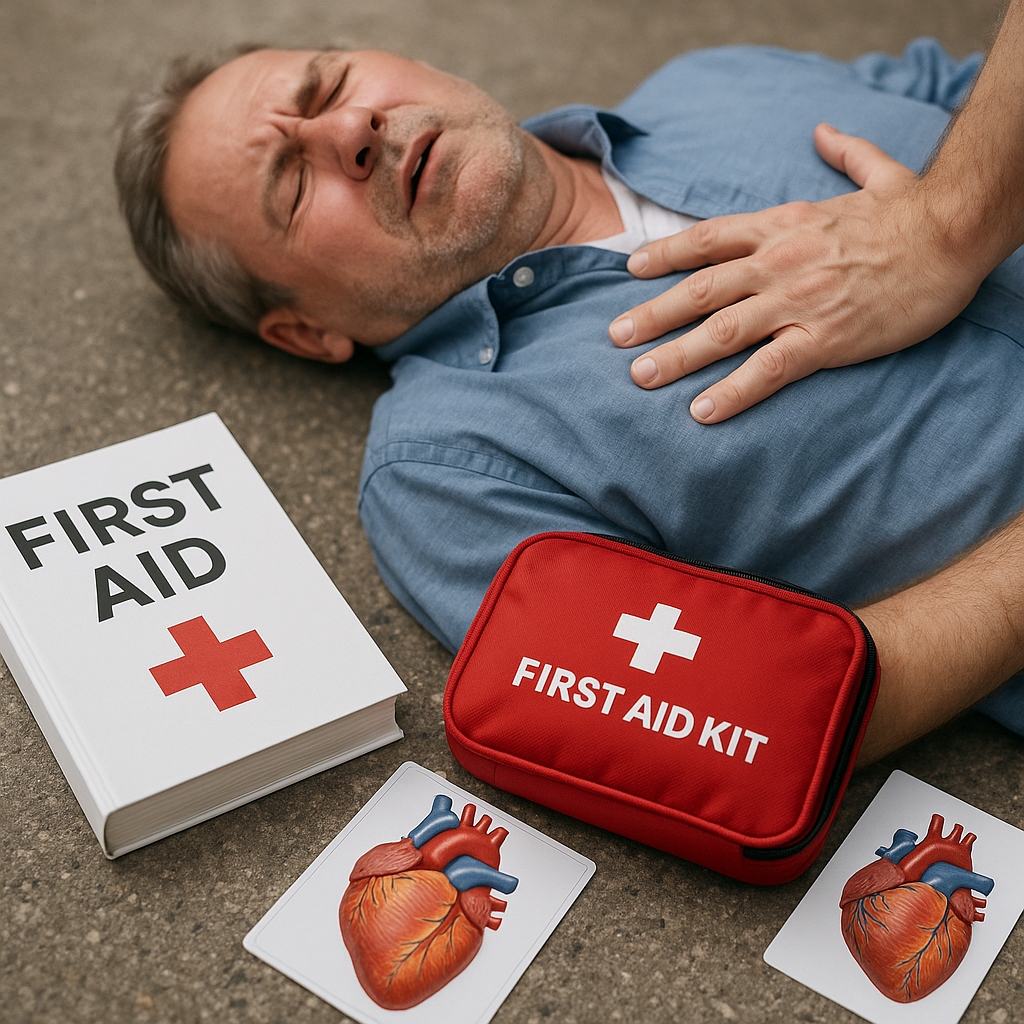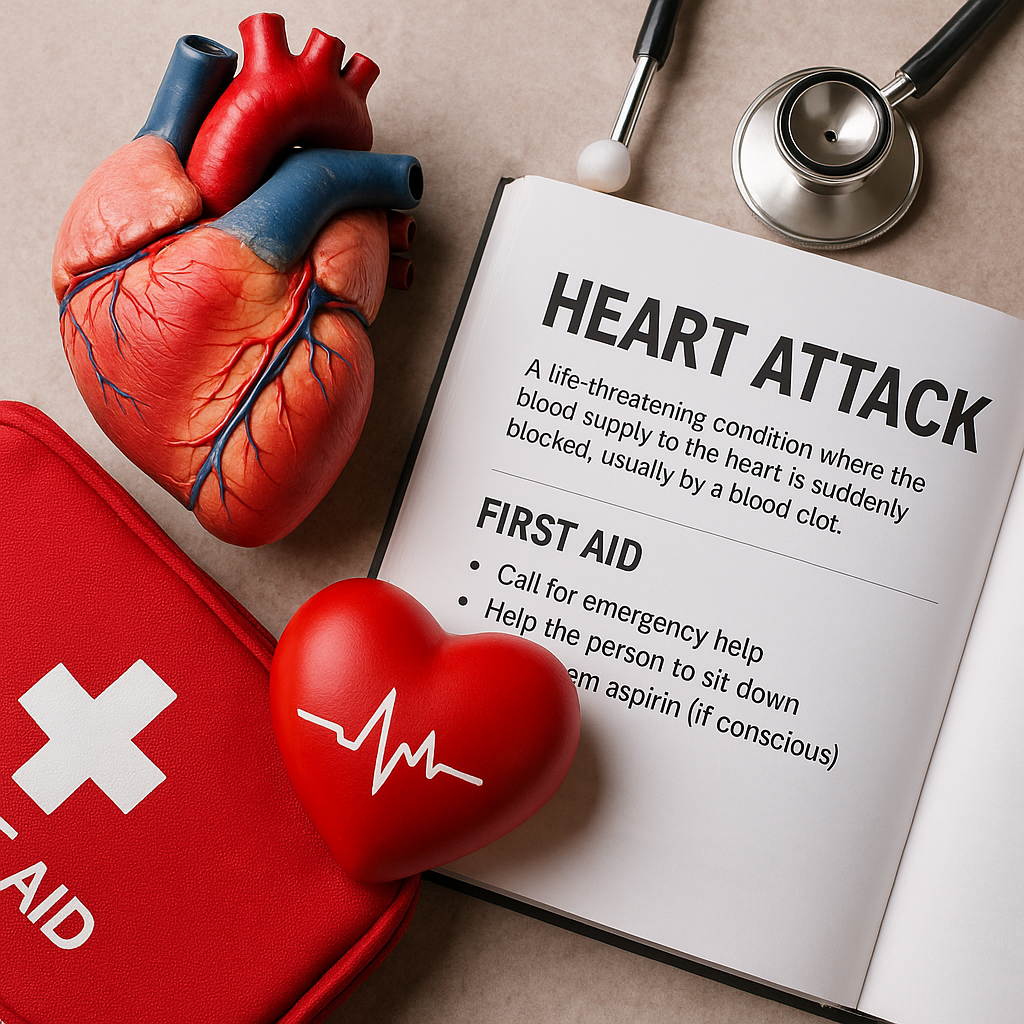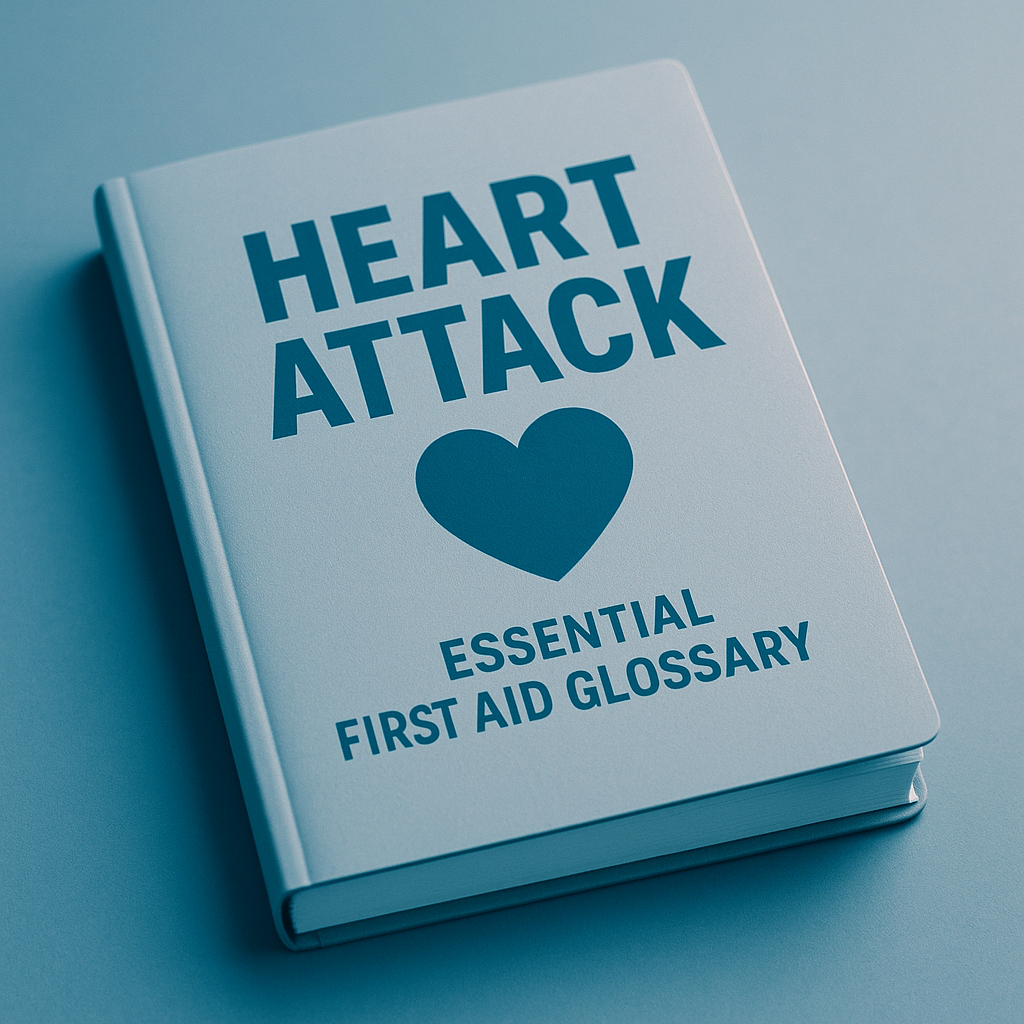- What is a Heart Attack?
- Key Facts About Heart Attacks
- Causes
- Symptoms
- Step-by-Step Guidance for First Aid in Case of a Heart Attack
- 1. Recognise the Symptoms
- 2. Call for Emergency Help
- 3. Administer First Aid
- 4. Use of Aspirin (if appropriate)
- 5. Perform CPR if Required
- Trainer Tips and Safety Advice
- Conclusion
Heart Attack: Essential First Aid Glossary
What is a Heart Attack?
A heart attack, also known as a myocardial infarction, occurs when blood flow to a part of the heart is blocked for an extended period. This blockage can cause damage or death to the heart muscle, leading to serious health consequences or even death if not treated promptly.
Key Facts About Heart Attacks

Causes
– Coronary Artery Disease: The primary cause, involving the buildup of fatty deposits (plaques) in the coronary arteries.
– Risk Factors: Include high blood pressure, high cholesterol levels, smoking, obesity, and a sedentary lifestyle.
– Other Causes: Stress, diabetes, and substance abuse can also contribute to the risk of a heart attack.
Symptoms
– Chest Pain: Often described as a feeling of pressure, squeezing, or fullness.
– Shortness of Breath: May occur with or without chest discomfort.
– Other Signs: Pain in the arms, back, neck, jaw, or stomach; nausea; lightheadedness; or cold sweats.
Step-by-Step Guidance for First Aid in Case of a Heart Attack
Playing a critical role in saving lives, quick and effective first aid can significantly influence outcomes in the event of a heart attack. Here’s how to respond:
1. Recognise the Symptoms
– Look for signs such as chest pain, shortness of breath, and discomfort in other areas.
– Assess the severity: If symptoms persist for more than 10 minutes or worsen, act immediately.
2. Call for Emergency Help
– In Australia, dial 000 for emergency services.
– Provide clear information about the situation, including the symptoms and the location.
3. Administer First Aid
– Keep the person calm: Reassure them to reduce anxiety as stress can worsen the situation.
– Position the individual: Encourage them to sit or lie down in a comfortable position; ideally, they should lean forward slightly to ease breathing.
– Loosen tight clothing: Remove any constrictive clothing around the chest or neck.
– Monitor their condition: Keep an eye on symptoms, noting any changes.
4. Use of Aspirin (if appropriate)
– If the person is conscious and not allergic, you can consider offering them aspirin (300mg), which may help thin the blood. In Australia, this should only be done after consulting with emergency services or under guidance from a healthcare professional.
5. Perform CPR if Required
– If the person becomes unresponsive and shows no signs of breathing, begin CPR:
– Call for help: Ensure someone else has called for an ambulance (or do it yourself).
– Start chest compressions: Push hard and fast in the centre of the chest at a rate of 100 to 120 compressions per minute.
– Continue CPR until help arrives or the individual shows signs of recovery (breathing, movement).
Trainer Tips and Safety Advice

– Educate Yourself: Consider taking a certified first aid course. Training can empower you to act effectively in emergencies.
– Stay Calm: Your demeanor can influence the patient’s anxiety levels. Maintain a calm and reassuring presence.
– Avoid Common Mistakes:
– Do not ignore mild symptoms: Early signs can escalate, so always err on the side of caution.
– Do not give food or drink: This can complicate treatment, especially if vomiting occurs.
– Recognise the difference between a heart attack and other medical emergencies like angina (chest pain caused by reduced blood flow to the heart, usually temporary) or panic attacks.
Conclusion
A heart attack can present life-threatening consequences, but having knowledge and preparedness can save lives. By recognising the symptoms, calling for help promptly, and providing first aid, you significantly increase the chances of survival. Always remember that staying calm and collected is crucial in these high-pressure situations. If you feel uncertain, seeking professional first aid training can equip you with crucial skills and confidence to act when it matters most. Stay informed, stay prepared, and make a difference.

Leave a Reply